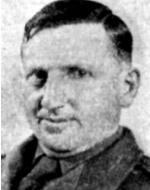Etstein, David (Doncha)
Son of Esther and Moshe, was born on October 29, 1910 in Sarny, Poland, to a traditional family. He attended the “Tarbut” Hebrew elementary school, passed the exams and was accepted to the government high school in his city. David was a studious student and helped his friends in their studies. At the same time he learned and got drunk from giving private lessons, opened a “room”, taught “Shulchan Aruch” and supported his family. He finished high school with honors. His ambition was to complete his studies at the Hebrew Teachers Seminary in Warsaw. David was a member of the He – Chaluts movement, worked as a bookkeeper, worked in a pioneering training program at the “Shachariya” kibbutz in Poland and later worked in the He – Chaluts center in Warsaw. When he came to serve in the Polish army he avoided service, moved to Germany and worked as a dairy farmer in a suburb near Berlin. He was also active in the He – Chaluts movement in Germany. David immigrated to Israel in 1932 and joined Kibbutz Ramat Rachel. He was active in the Hanoar Haoved movement and in the socialist youth movement and was among the first to leave the kibbutz for Sodom. Where he worked in all the hard work and excelled in them. In the north and south of the Dead Sea was the center of the group of porters and represented the workers before the management of the potash company. When he was born in Sodom, his daughter was born and he called her “Eilat” (in 1936!) And when they asked him why the name was given, he replied: “And that is a bold dream ?!” In 1936 he was appointed secretary of the Labor Bureau in Jerusalem. In 1938 he returned to the Dead Sea, this time as Secretary of the Workers’ Council. At the end of 1939 he participated in a seminar for Histadrut activists in Rehovot, at the invitation of Berl Katznelson. From 1940-1944 he worked as a secretary and bookkeeper in the “Stavah” transport cooperative in Jerusalem. In 1945 he was elected Secretary of Kibbutz Ramat Rachel and worked in his position for a year and a half. In 1946 he was sent by the Jewish Agency to the outlying camps in Germany, worked extensively in the Landsberg and Bergen-Belsen camps, excelled in his position and received great esteem. After two years of activity in the camps, he decided to return to Israel at the beginning of 1948 – after receiving information about what was happening in the country and about the attacks on Ramat Rachel. “The ground is burning under my feet,” he wrote from a distance. David was energetic and persevering, alive, skillful and sober, all fiery with pioneering passion. With willpower and courage, simplicity and alertness. He reached Ramat Rachel in Mishorin. He worked hard to fortify it, stood up to all the attacks and the siege, and encouraged his friends. Ramat Rachel was a wedge in the Arab area and controlled the Jerusalem-Bethlehem road. The situation worsened when, on May 19, 1948, Egyptian forces arrived with cannons. The enemy concentrated an effort to conquer the point and was subjected to heavy shelling that caused the destruction of the farm buildings and the fire. On May 22, after heavy bombardment, the situation was desperate defenders. A reinforcements department set out for the scene, but the armored vehicle they were traveling in was hit by a shell and most of the reinforcements were hit. In the absence of reinforcements, the defenders had to retreat. David initially objected to the withdrawal and then retreated with the armored vehicle that was on the farm. As they passed through the gate, on May 22, 1948, the driver stopped the armored vehicle – despite the great danger – and demanded the collection of a wounded company. When it was raised, a shell hit the car and David was killed along with six of his friends. He was buried in Sheikh Bader A. He left a wife and two daughters. On the 26th of Elul 5710 (September 8, 1950) he was put to rest at the cemetery in Ramat Rachel. His memory was included in the booklet “Ramat Rachel in Action”.
